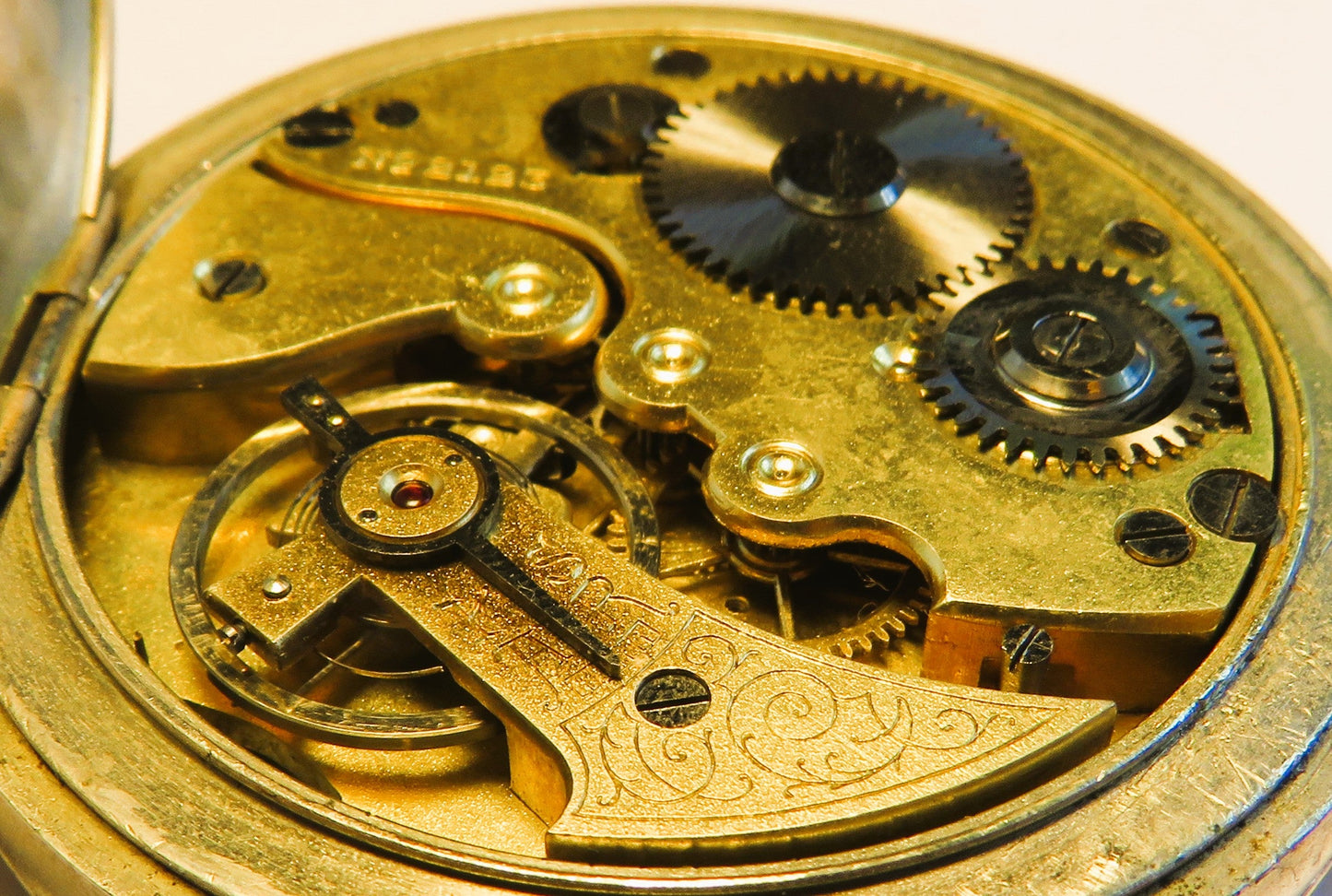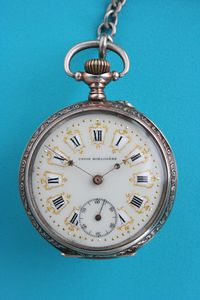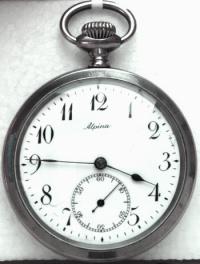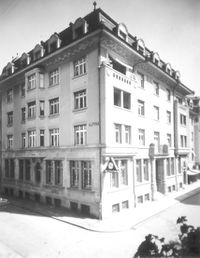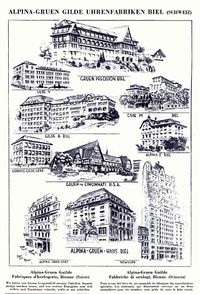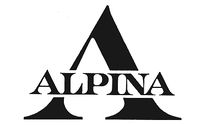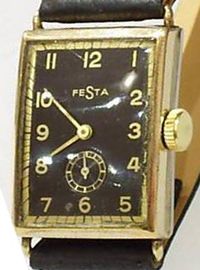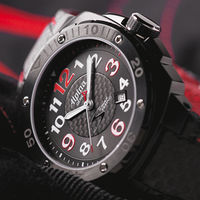Sammler-Uhren
Alpina fully signed artillery stopwatch Kriegsmarine World War I ca. 191
Alpina fully signed artillery stopwatch Kriegsmarine World War I ca. 191
Couldn't load pickup availability
Original Alpina museum-quality, extremely rare, fully signed example of an early artillery stopwatch of the Reichsmarine from around 1920
For the production date, see below. What makes this wonderfully rare artifact of German naval watch history so special and valuable is the complete signature with the naval "M" and the German Imperial Eagle.
Attention, eBay!!! World War I!! Imperial Navy! These are purely military signatures; the imperial eagle common during the imperial era has absolutely nothing to do with National Socialism!
A super rare piece of military and naval watch history, as it is completely and authentically signed and only very rarely comes onto the market
Description:
The 100% original Marine Artillery Stopwatch has the usual dimensions for the Navy: 50mm case diameter, very rare, "Alpina" signed white dial with overhead, indirect second, onion crown
The extremely rare Marine Artillery Stopwatch is fully signed on the back with the imperial eagle, the "M" for (Kriegs)Marine, a boat or application number below as usual with the Imperial Navy from 1918 after the abdication of the Kaiser until 1933 (see photos, even the most elaborate Marine Chronometers by Lange&Söhne or similar were signed exactly like this).
Dial shows the 60 divisions common in the Kriegsmarine, but with a super rare artillery scale made only for this small series of the Kriegsmarine, starting with 200m and running down to 0 meters, the targeted impact, in unrestored undamaged best condition
Based on the flight time or resulting flight meters of a projectile measured with this precision instrument, the cannons could then be adjusted and set more precisely
Good, used collector's condition! Winds smoothly, runs smoothly (accuracy not tested), unrestored dial with a few hairline cracks visible in the photos, luminous dots perfectly and completely preserved, all lids close flush
If you need information about signatures of military watches used in the era of World War II, please feel free to contact me by email ;-)
EZ - 2: best age and usage-related condition, barely noticeable signs of use, dial unrestored flawless, starts and runs, lid closes flush, movement clean
Alpina/de
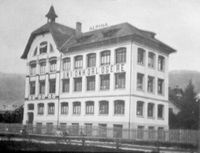
Alpina is the most important watch brand of the "Union Horlogère", a cooperative of watch manufacturers and dealers
Alpina (watch brand)
Union Horlogère: Cooperative of watch manufacturers and dealers
The cooperative Union Horlogère was founded in 1883 by Gottlieb Hauser von Stadel, president and administrator in Winterthur, under the name " Swiss Watchmakers Corporation " and was located in Biel at Neuengasse 5 from 1890. Co-founders were Erhard Baur von Rafz, in Küsnacht, vice president and treasurer; Gottlieb Koblet von Eidberg-Seen, in Töß, secretary; Christian Graf-Link von Schaffhausen, in Romanshorn; and Carl Meyer von Bertschikon-Winterthur, in Frauenfeld, as assessors. Initially, the cooperative's business premises were at Marktgasse No. 447 in Winterthur, owned by the president and administrator, Gottlieb Hauser. The aim of the association of manufacturers and dealers was the cost-effective production and distribution of Watches .
The Union Horlogère began to develop its own calibers and expand its distribution network. The ebauches were produced by the Alpina ebauches factory ( Duret & Colonnaz ) in Geneva . Duret & Colonnaz also played a key role in the development of the first Alpina calibers . A branch of the Union Horlogère was located in Geneva, and from 1916 this was located at Passage de Lions 3. A branch was also opened in Besançon . In 1901, the cooperative "Swiss Watchmakers' Cooperative" (Association horlogère suisse) in Biel decided at its general meeting on June 9th to use the following name from now on: "Union horlogère, Schweizerische Uhrenmachergenossenschaft, Association horlogère suisse". This was repeated on April 25th, 1913 , when it became the Union Horlogère, Schweiz. Watchmaking cooperative - Association-horlogère Suisse, Bienne registered under number 33366. (Montres, partie de montres, régulateurs, pendules et leur emballages.)
In 1904, the Biel-based company registered the word mark "Alpina" in the trademark register. Originally, the brand name Alpina was a caliber designation for two movements by J. Straub & Co. , a 12-ligne and a 19- ligne lever movement. Jacob Straub had trademarked the brand name Alpina for his watch movements. Since Straub & Co. was Union Horlogère's main supplier, practically all of Union Horlogère's watches bore the brand name Alpina. At that time, Emile Schwarz ( 1882 - March 22 , 1929 ) was a director at Alpina. As early as 1912 , plans to build a "home of their own" and acquire the necessary land were considered, but no decision was made. In 1915, Météore SA was founded in Biel by Union Horlogère. In 1917 , the purchase of the property at Unionsgasse 13 in Biel, to which the business had since relocated, was finally considered for the first time. In 1913, on behalf of Baugesellschaft Union AG, August Haag built a residential and commercial building at Unionsgasse 13-15 in Biel. This building is considered to be one of the finest Heimatstil buildings in the city of Biel. The purchase of the site at Unionsgasse 13 - Eisengasse 5 in Biel was discussed in detail at the meetings of the Board of Directors on October 17 and 25 , 1919. After difficult negotiations, the Board of Directors finally managed to agree on a purchase price of CHF 375,000 with the previous owner, Baugesellschaft Union AG in Biel (Uniongasse!). The Union Horlogère was also known as Vereinigte Uhrenfabriken « Alpina » AG and « Alpina » Fabriques d'Horlogerie Réunies SA (registered February 2, 1915).
In the search for a uniform designation system, the members of the Union Horlogère agreed on:
-
Alpina for all watches of the best quality,
-
A (1926), Festa (1928) and Novice for watches of medium and simple quality.
Until the early 1970s, J. Straub remained the most important manufacturer for Union Horlogère. Straub also supplied movements ( Alpina 588 , 582 , 447 , and 566 to 568 , as well as P 05, P 09, P 53, and P 81 to P 85) to Rensie Watch Inc. , New York.
Gottlieb Hauser Jr., a trained watchmaker, worked for Alpina Union Horlogère from approximately 1903 to 1947 as a traveling foreign representative, primarily for Eastern European countries. He lived in Vienna for many years, from where he traveled to these countries. In addition to an autobiography, he also wrote extensively about the history of Alpina in the Swiss Watchmaker's Journal and the Watchmaker's Week. This can be read on a separate page and was originally published by Altstadtleist Biel on their website and is definitely worth reading.
In December 1945 Sven Janson-Juillerat became director at Alpina, succeeding director Walter Peter . Sven had already worked for Alpina in the Biel office since 1933 and in 1938 became joint signatory with Auguste Hammel, succeeding Herbert Jeannneret . In 1945 Ulrich Klingenberg was appointed co-director alongside Sven Janson. In the 1960s the name Terval appeared alongside the name Alpina in Ebauches SA movements. The Straub hammer automatic movement was replaced by an AS movement. Ebauches SA also bought and assembled movements with a date display. In 1968 Sven Janson-Juillerat handed the reins over to younger staff, with HR Arn becoming director.
Members or suppliers of the Union Horlogère
In addition to J. Straub & Co., the following manufacturers were members or suppliers of the Union Horlogère:
- Kurth Frères, Grenchen (later Certina ) until around 1920 ,
- Duret & Colonnaz, Geneva (rough works),
- Adolf Haeker (case),
- Lesquereux & Co, La Chaux-de-Fonds , (cases and movements), Mobile Watch Co. .
- Cyma - Tavannes Watch Co. , Movements, Le Locle - Tavannes.
- Louis Bandelier & Cie , gilding, silvering and nickel plating.
- Huguenin - Robert (case),
- Ali Jeanrenaud , La Chaux-de-Fonds ( pendants , temples and gold case),
- Oskar Mistely, La Chaux-de-Fonds (decorations, guilloches and engravings),
- H. Maumary, La Chaux-de-Fonds (tension springs),
- H. Bopp-Boillot , La Chaux-de-Fonds (pointer),
- Numa Nicolet & Fils, La Chaux-de-Fonds (dials),
- Schwob Freres & Co , La Chaux-de-Fonds ( Cyma ),
- Robert Frères, Villeret ( Minerva ),
- L. Rueff & Meyrat, Saint-Imier (Alliance),
- Favre & Gindrat , 1912-1914, Besançon, Avenue Denfert Rochereau 1. R. Favre .
- Fritz Moeri, Montres Moeris , Saint-Imier .
- J. Assmann, Glashütte until 1904 for the German market.
-
Météore SA subsidiary which produced radium.
The first agencies were established in Germany, Eastern, and Northern Europe. In 1901 , the name "Alpina" was registered as a trademark. In 1905 , the US companies Gruen and Hamilton joined the company. See also: Alpina Gruen Gilde SA .
In the 1920s, the following were added:
- Jules Bonnet , Biel ,
- Fabrique d'Horlogerie Montilier , Constant Dinichert junior , Montilier,
- G. Huguenin, Biel (later Hamilton ),
- Aegler, Hermann Aegler SA , Biel ( Rolex ),
- Fred and Georg Gruen, Cincinnati/Biel ( Gruen Watch ),
- Albert Weber Watch Case Factory , Geneva.
- Marc Favre & Co. Biel.
- Lavina Manufacture d'Horlogerie , Villeret.
-
Ernst Böhlen-Lambelin , watch case (gold).
Presumably, the Lavina Manufacture d'Horlogerie company was also a member, because an image of the Lavina factory was used in the "Alpina Gruen Guild" advertisement. This building image closely resembles the Lavina Manufacture d'Horlogerie factory. However, buildings were sometimes depicted larger than they actually were. This factory still stands on (Rue) Le Pontins in Villeret and has never been expanded. Lavina was already collaborating with Gruen.
Over time, Alpina used movements from AS, Certina, Cyma, EB, ETA, FEF, Felsa, FHF, Frey, Gruen, Hamilton, Junghans, Landeron, Marc Favre, Minerva, Moeris, Peseux, Record, Rolex, Straub, Cyma-Tavannes, Unitas, Universal, Urofa, Valjoux and Venus, among others.
Alpina distribution network
In its 1930 yearbook, Alpina Gruen Gilde SA states that it has a distribution network of 1,575 retailers, mostly in Europe.
These were supervised by 6 country representations:
- Alpina Switzerland with 102 retailers,
- Alpina Germany with 928 retailers (e.g. Carl Oertling in Neumünster).
- Alpina Austria with 77 retailers (e.g. Paul Wagner in Vienna).
- Alpina Netherlands with 50 retailers,
- Alpina Hungary with 34 retailers and
- Alpina Denmark with 28 retailers,
Furthermore, there were Alpina dealers in the Czech Republic and Slovakia (134), in Italy (64), in Poland (32), in Spain (27), in Sweden (21), in Belgium (24), in the Balkan states (24), in Luxembourg (10), in Norway (7), in Latvia (4), in Estonia (1) and in other countries (8).
Alpina brand names
- Alpina
- Festa
- Novice
- Starliner
- Terval
Exclusively for Germany
- Artina
- Meton
- Winner
- safe
- Pretina
Errors in registered trademarks
In Karl Kochmann 's book *Clock and Watch Trademark Index: European Origin*, Aleph is listed as an Alpina trademark, registered on December 24, 1926. This name cannot be found in the original archives of the Alpina Union Horlogère, neither in the commemorative publication, nor in the caliber book, nor at the Alpina Gruen Gilde. An old Aleph pocket watch does have a caliber 1722, but this movement is not a Moeris 19- Linien D caliber, which were used for the Alpina 292 and Alpina 294 or the Alpina 1720 and Alpina 1722. Kathleen H. Pritchard mentions Albina alongside Aleph in her book *Swiss Timepiece Makers 1775-1975 *. Albina and Albinah were registered by Paul Auguste Cornioley in Fleurier on November 25 , 1912 with numbers 32290 and 32291.
Alpina Watch International
With the transformation of Alpina Union Horlogère into Alpina Watch International in 1972 , the Straub & Co. factory was closed. This marked the end of the era of producing in-house movements . The red triangle and the "Alpina" logo, which had been used for many years, also disappeared. Kurt Wanzenried , who had previously worked at the Buren Watch Company , became the new director. Heinz Labhart from St. Gallen served as representative for the Netherlands and Belgium, among other things.










